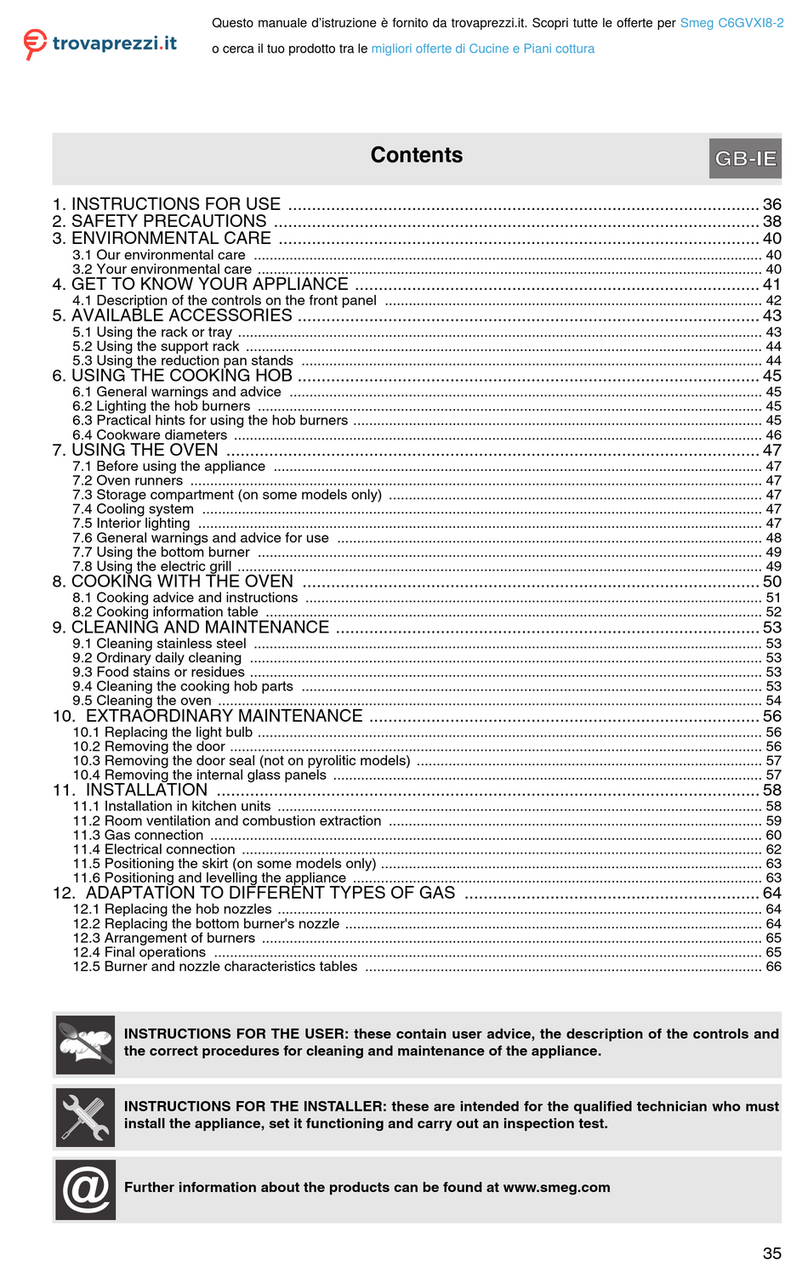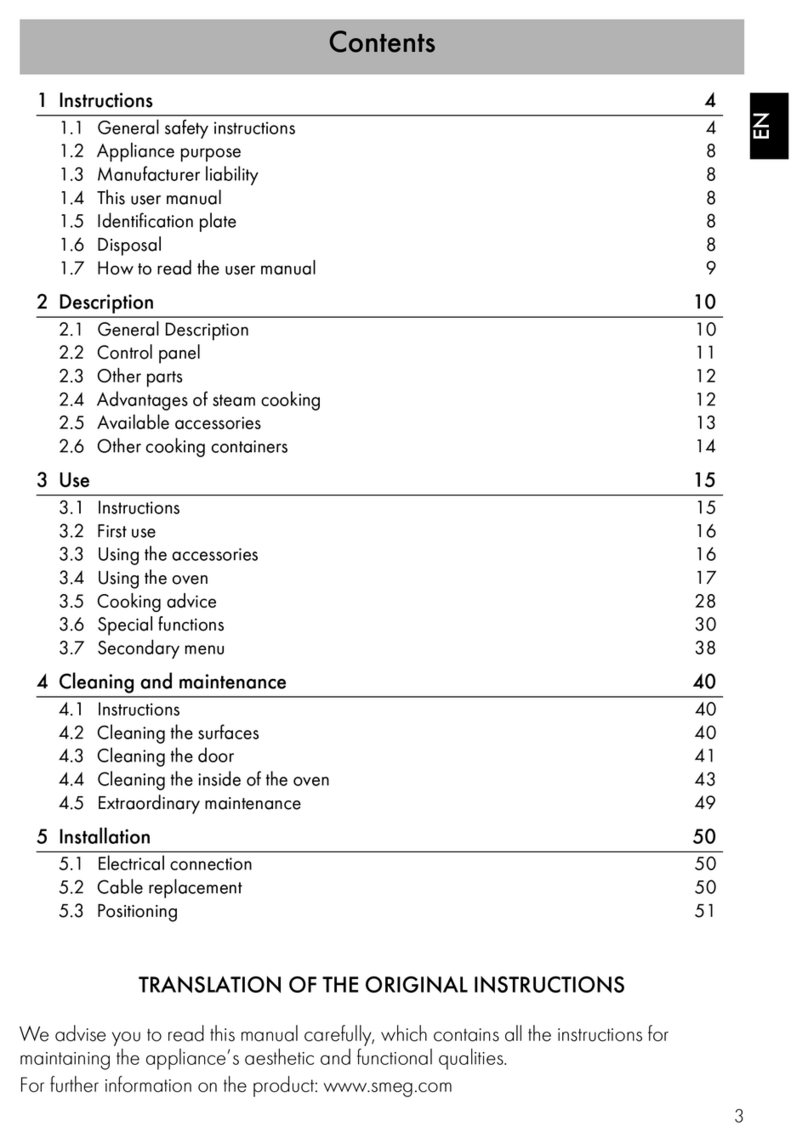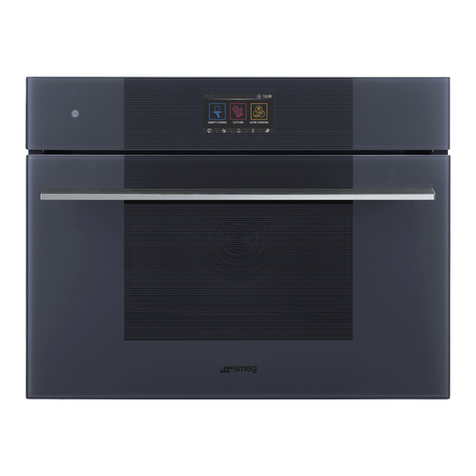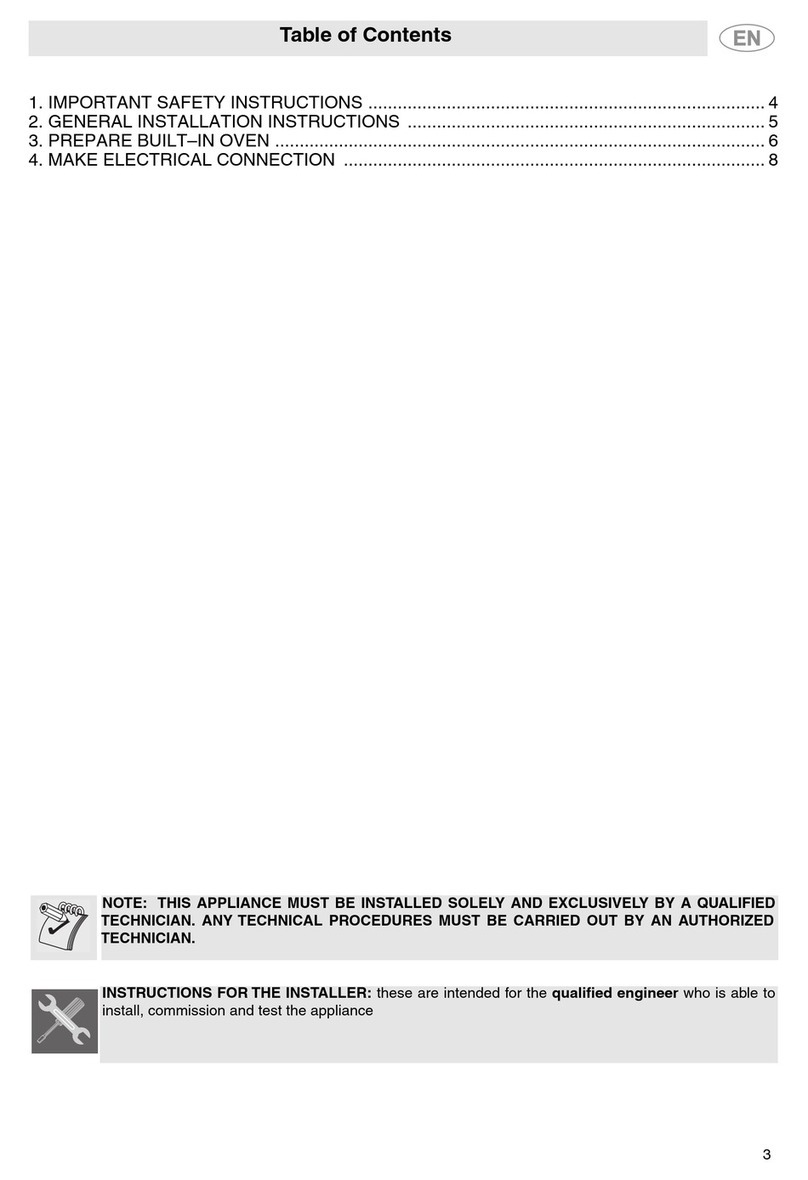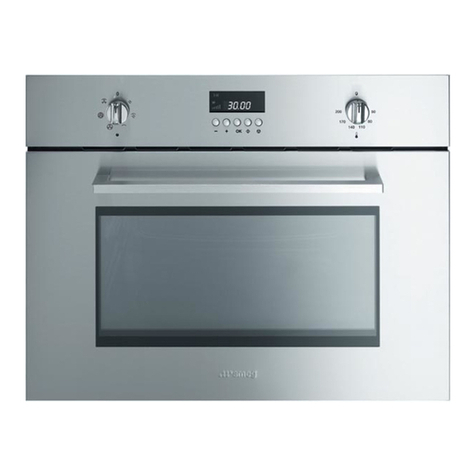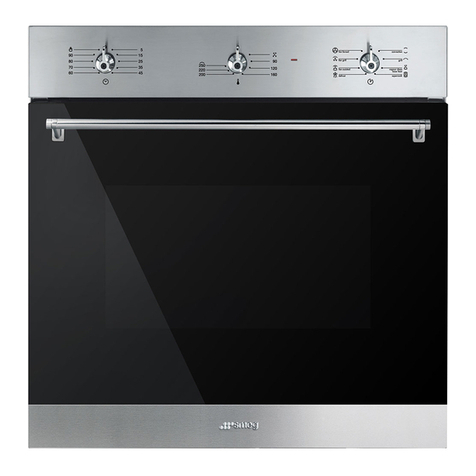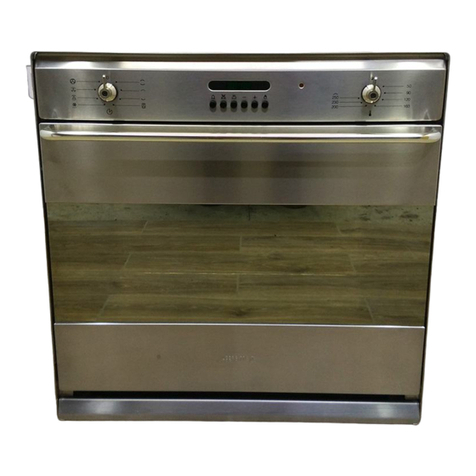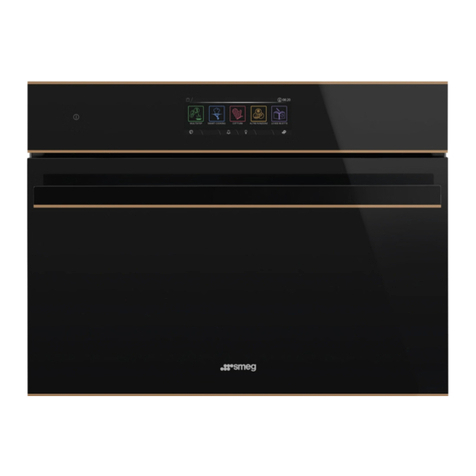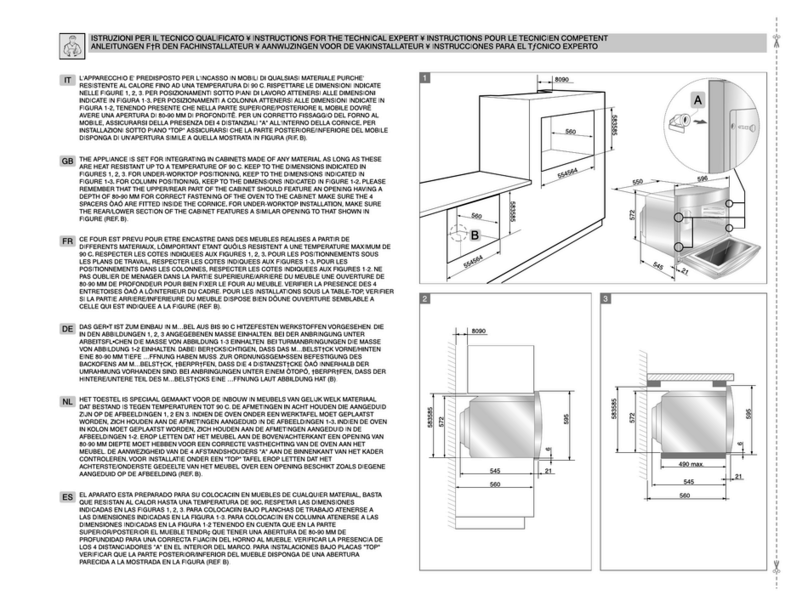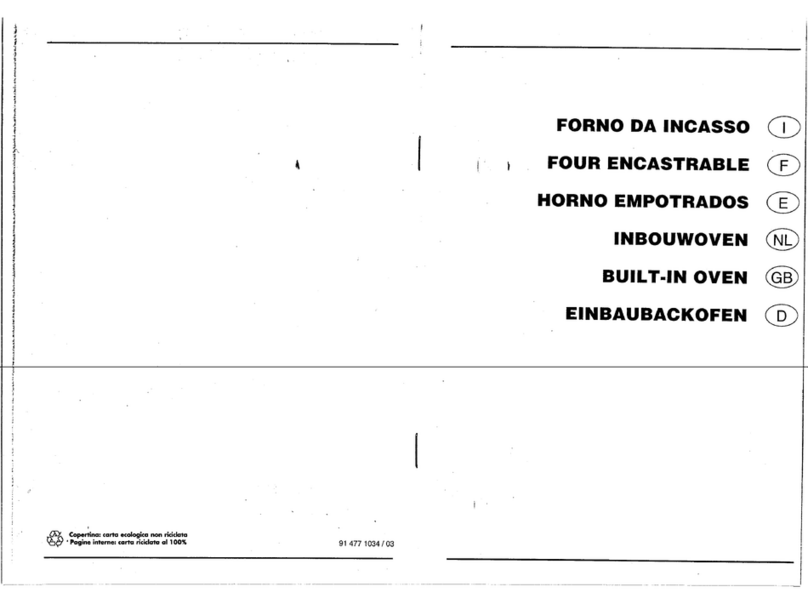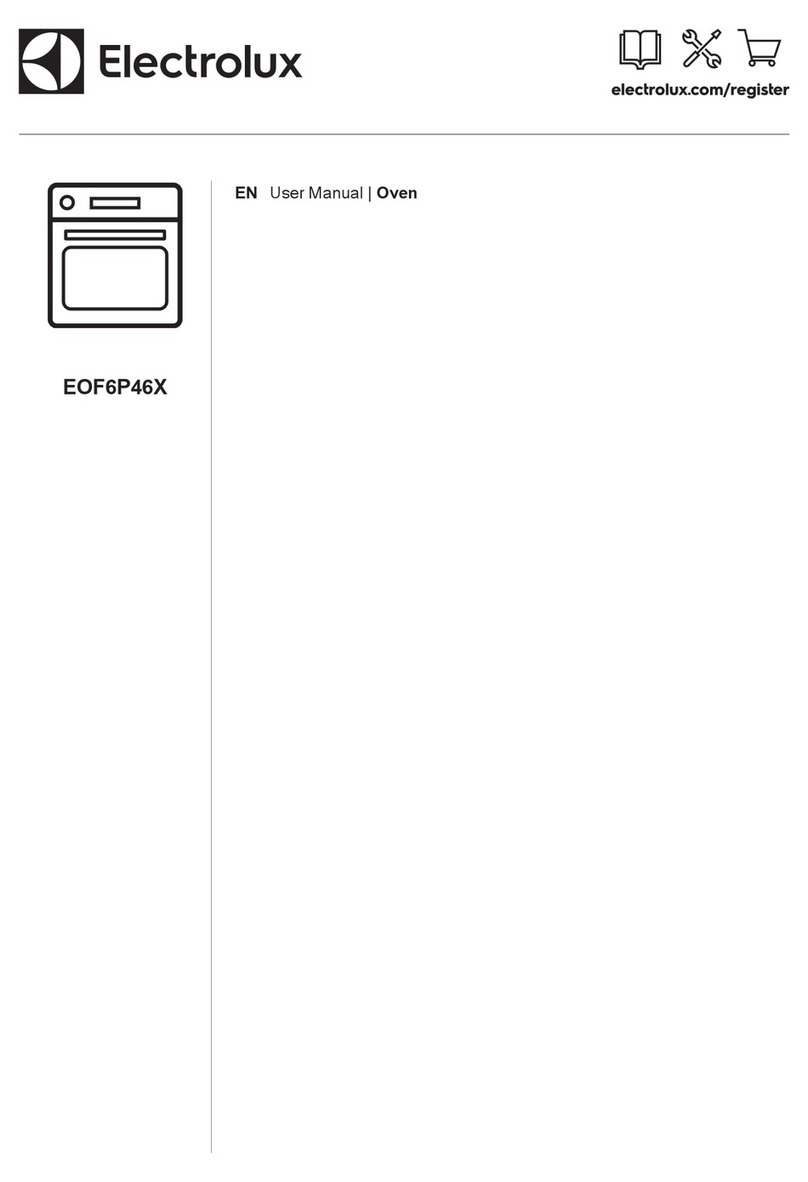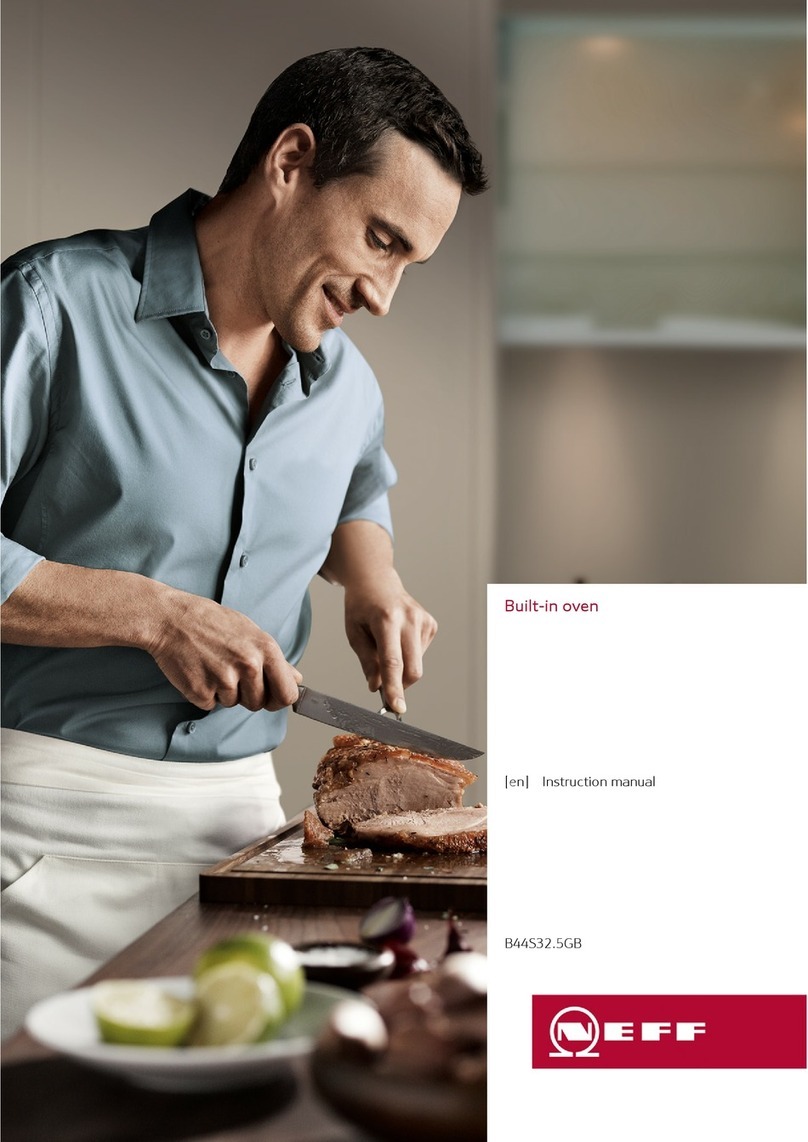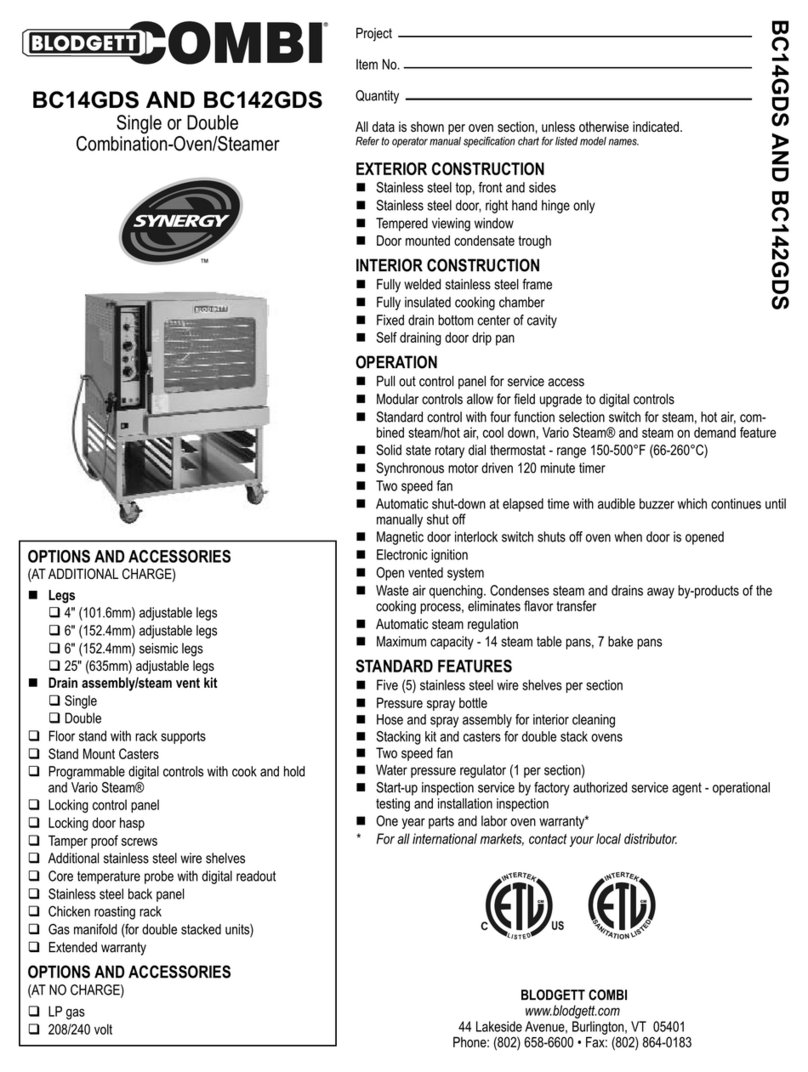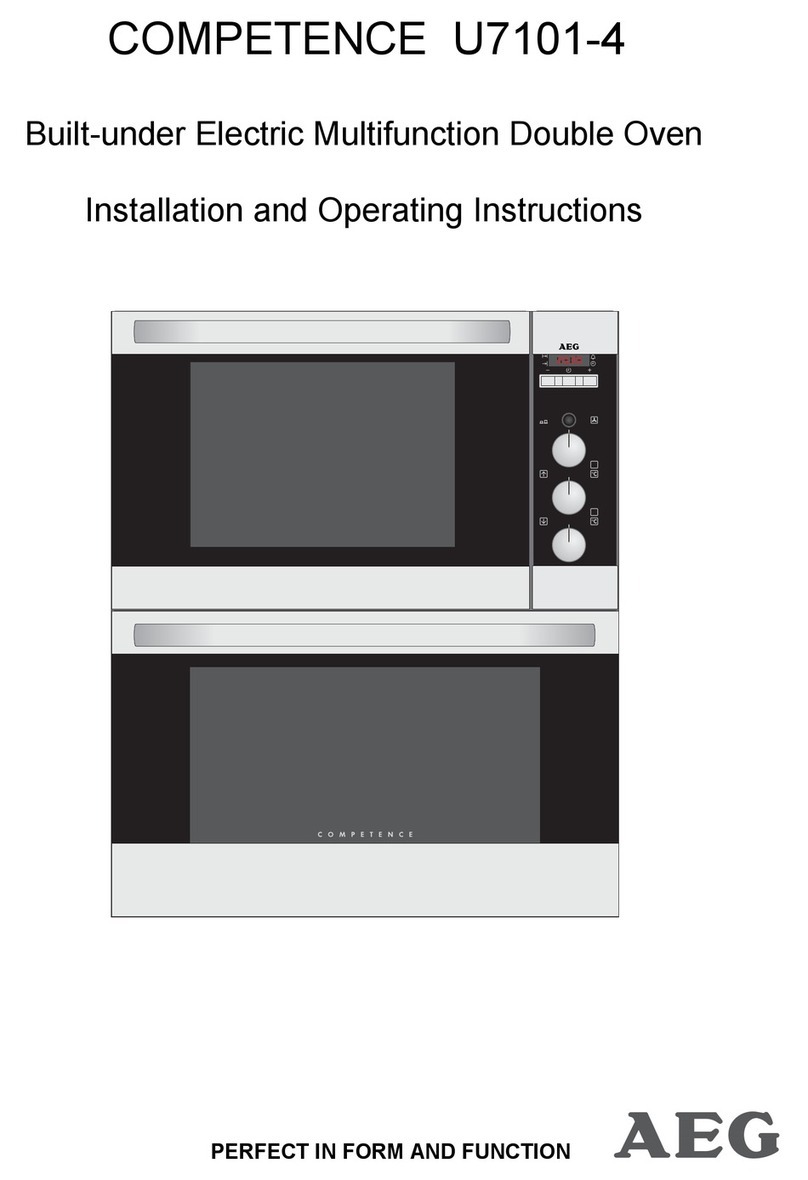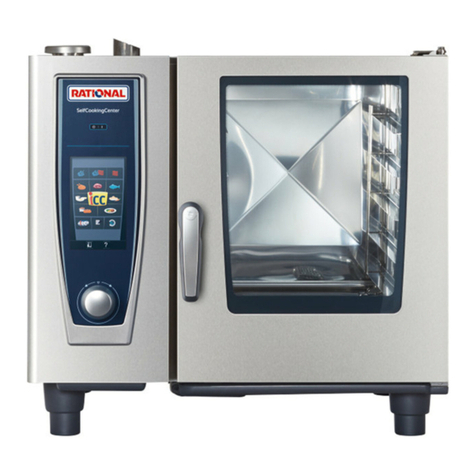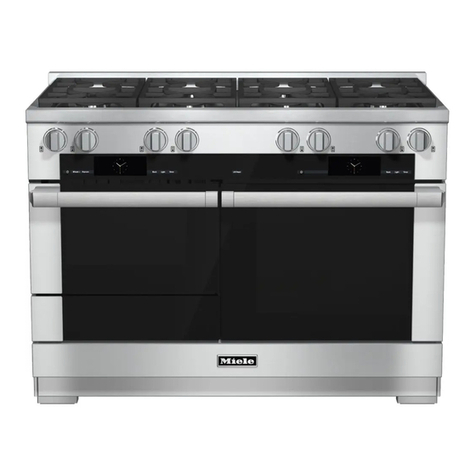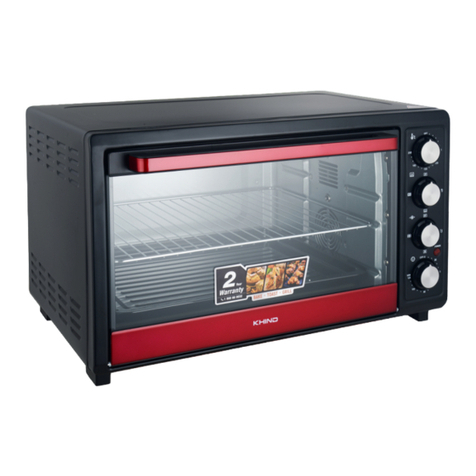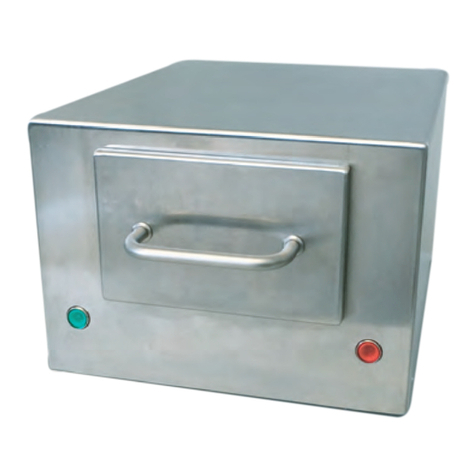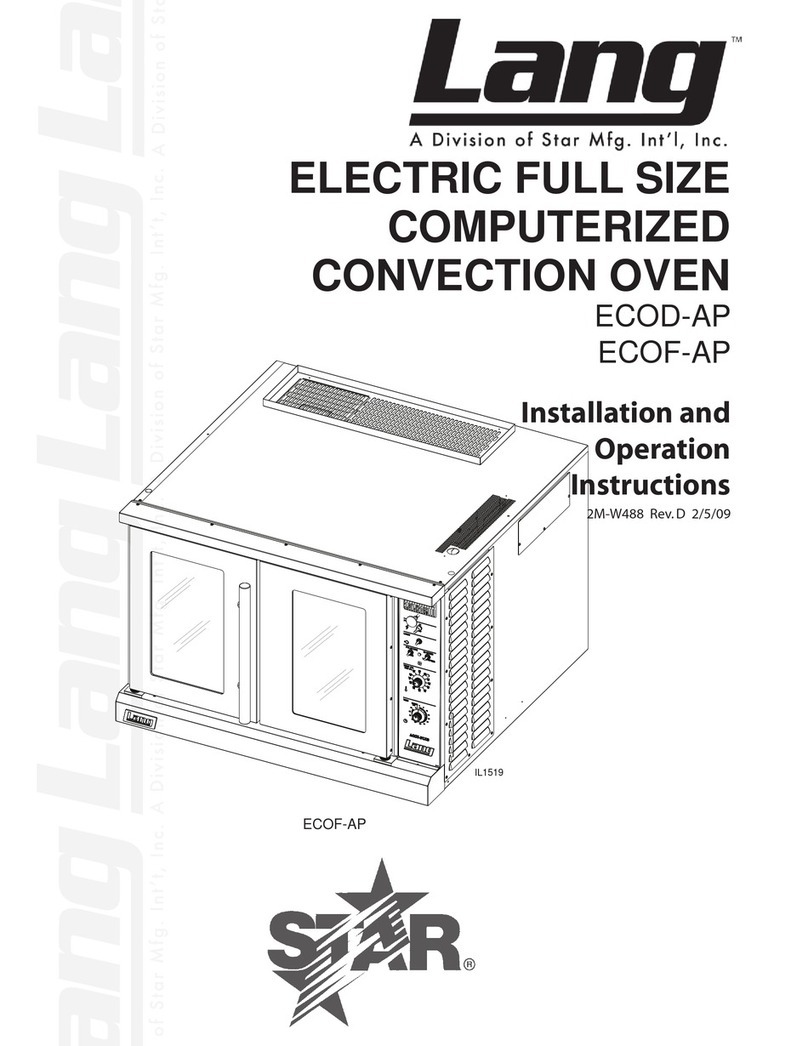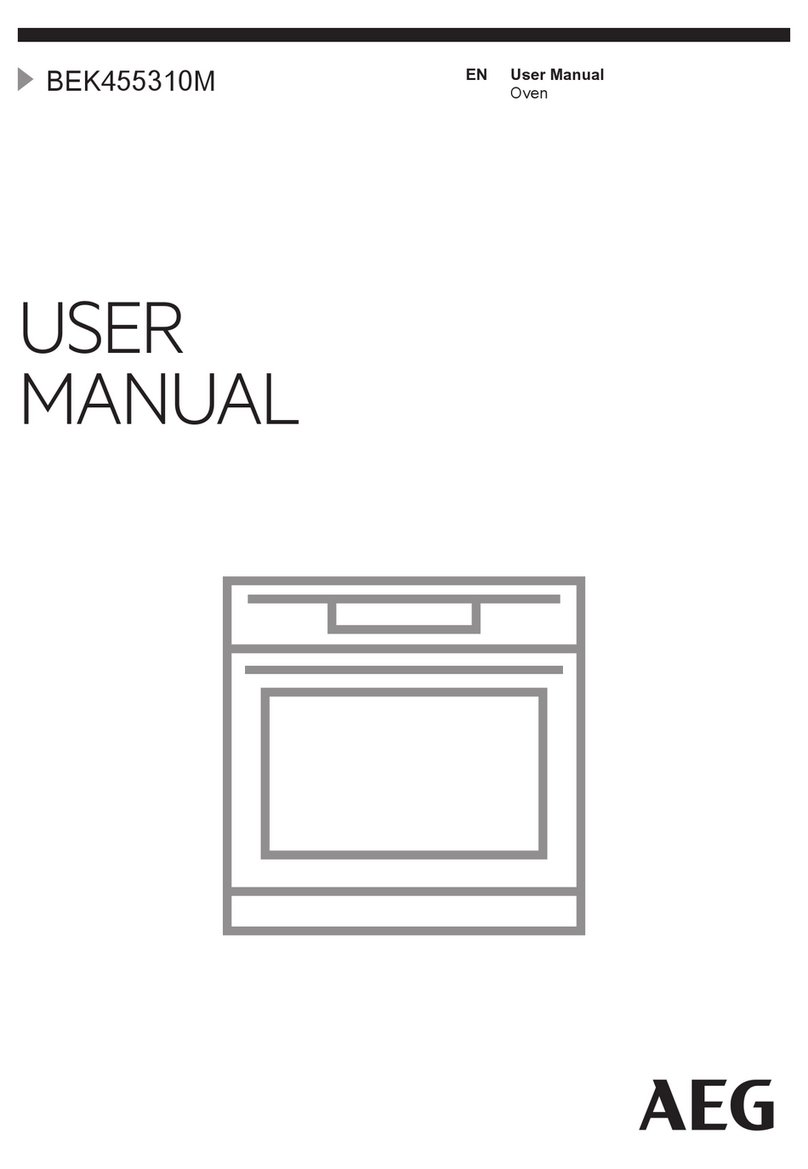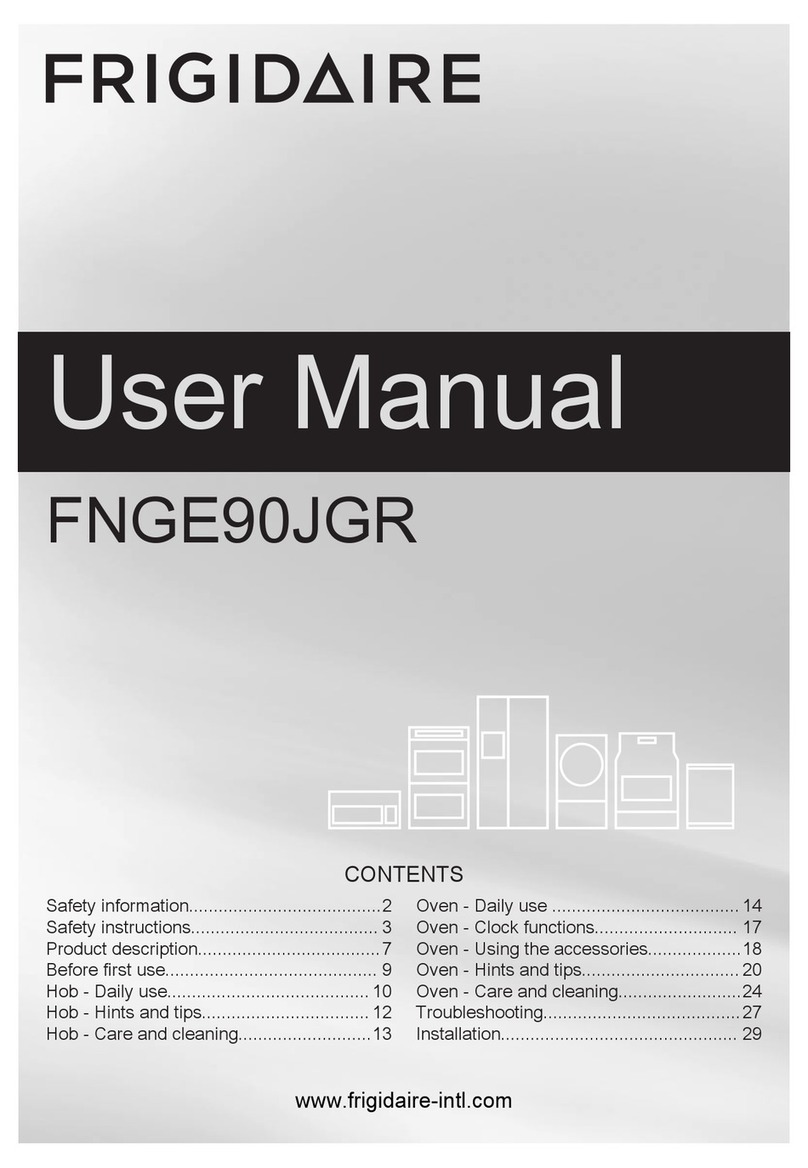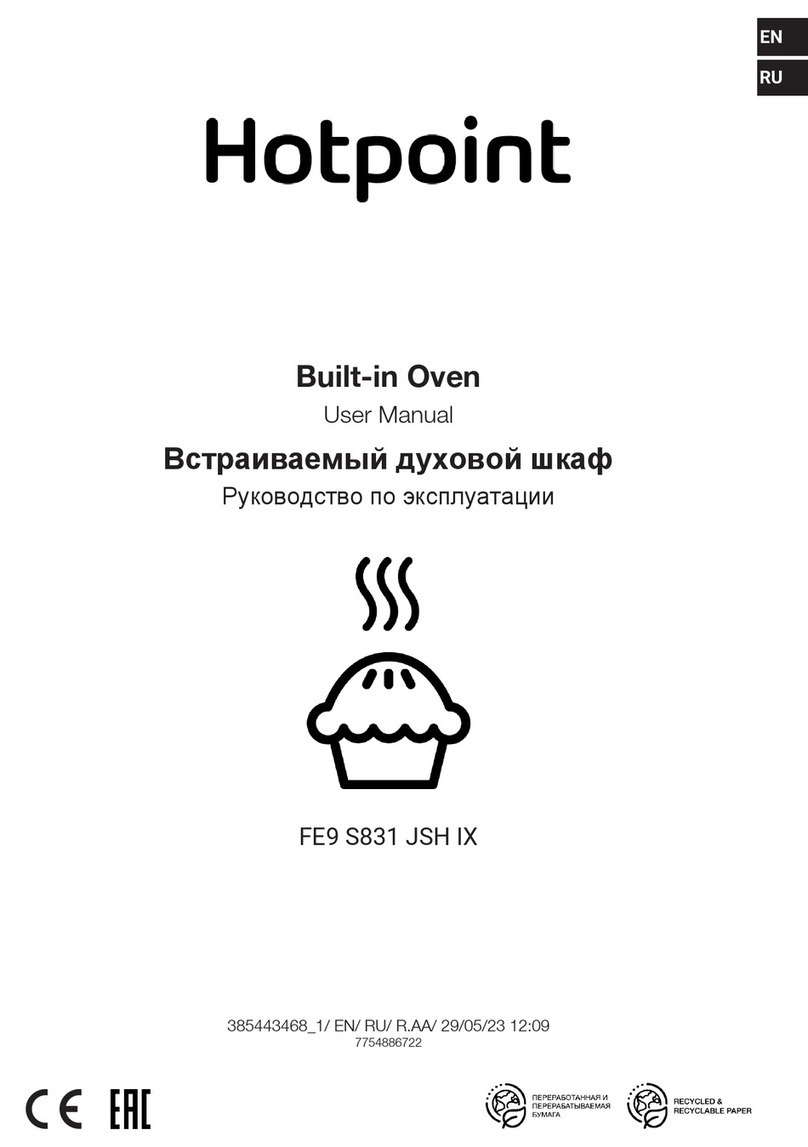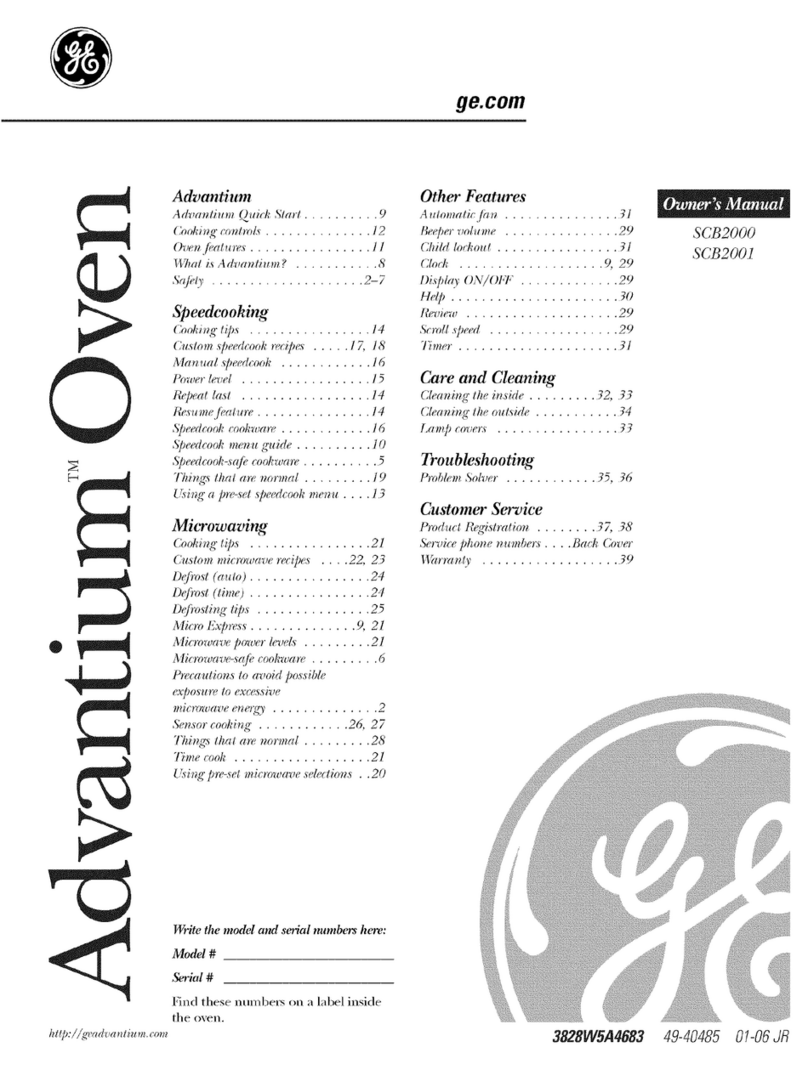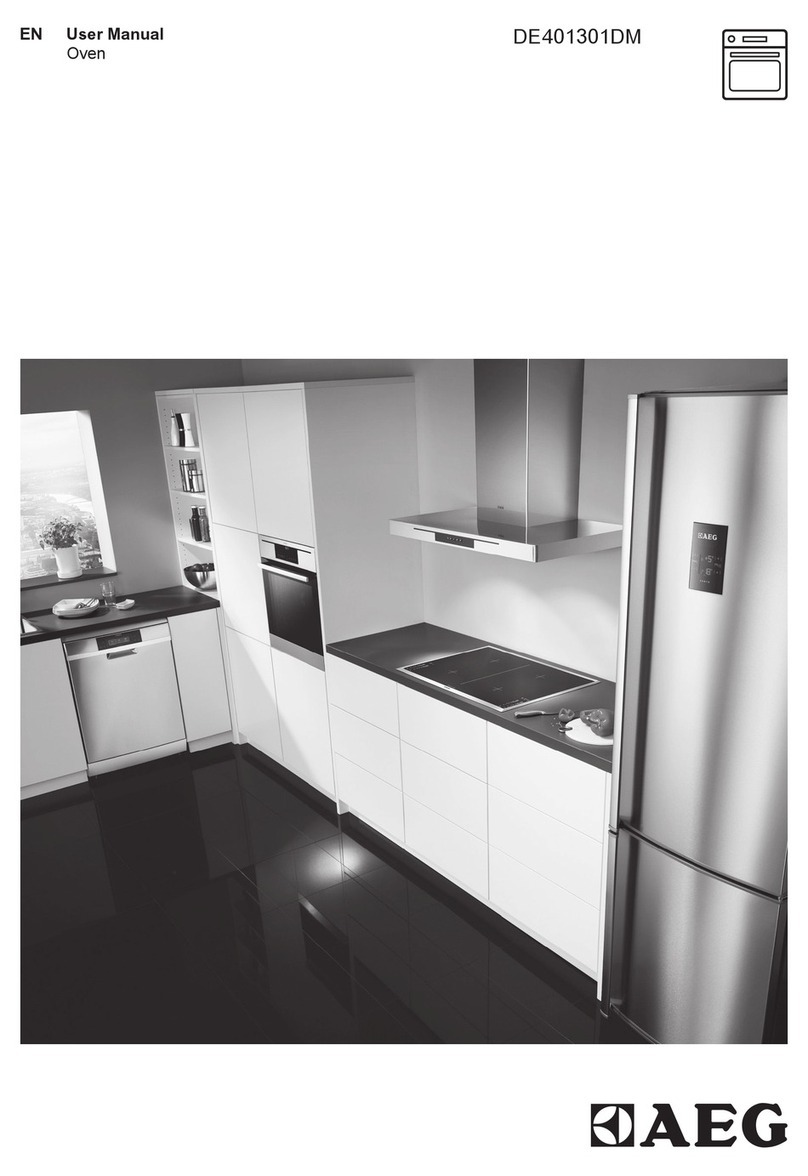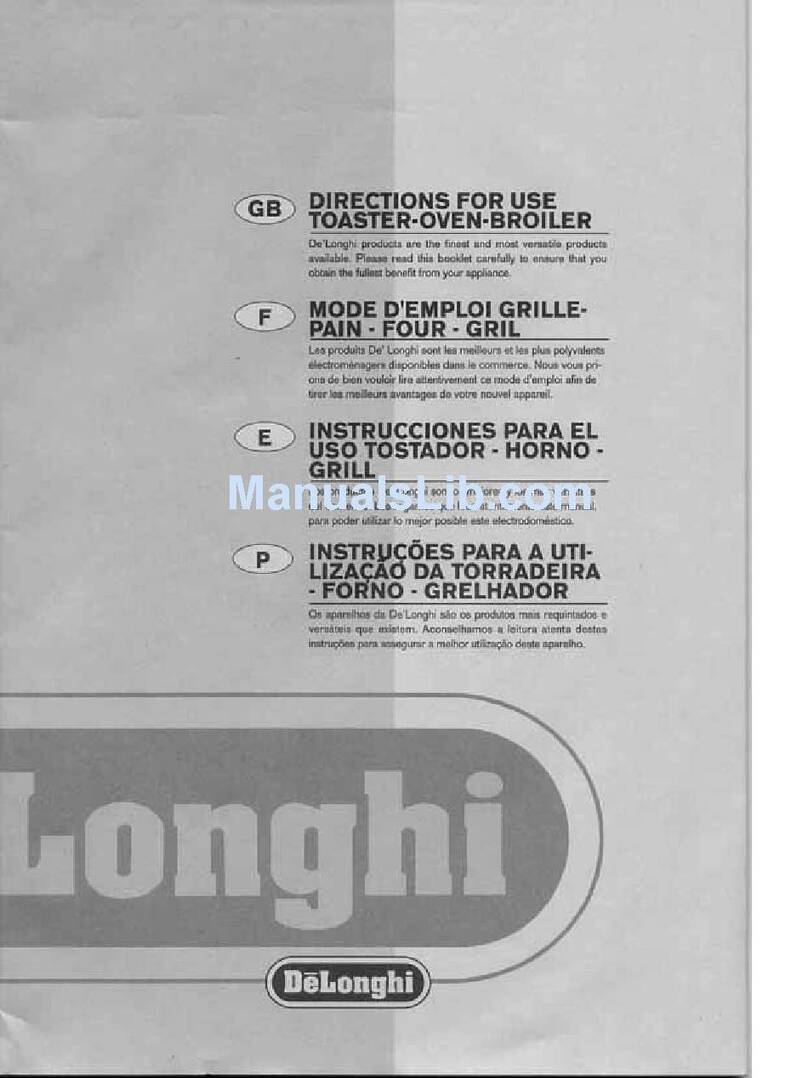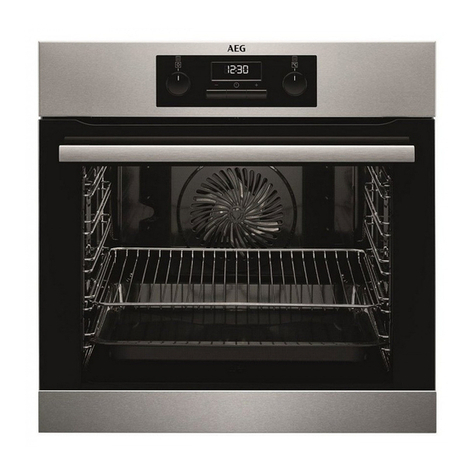Description of controls
2.2.2 Minute-minder
This function does not stop cooking but just triggers the beeps.
-When the key is pressed the display illuminates,
appearing as shown in figure 1;
-Press the or keys within 6/7 seconds to set the
minute-minder. Whenever a key is pressed, 1 outside
segment, representing 1 cooking minute will light up
(figure 2 shows 10 cooking minutes).
-The countdown will start 6/7 seconds after the last key is
pressed; at the end of it, you will hear the beeps.
-During cooking with countdown, the current time can be
displayed by pressing the key once; press again to
return to the minute-minder display.
-At the end of the countdown, the oven has to be
switched off by hand, by turning the thermostat and
the function selector to 0.
1
2
32
2.2.3 Programming
Cooking duration time: the 2nd button can be used to set the cooking
time. Before setting it, turn the thermostat to the cooking temperature of
choice and the function selector knob to any setting. To set the cooking
time, proceed as follows:
- Press the key for 1/2 seconds; the pointer will move
to position 12 (Fig. 1).
- Use the and keys to set the cooking time;
whenever the key is pressed, 1 minute will be
added to the cooking time, and every 12 minutes a
new inside segment will light up (figure 2 shows a
cooking time of 1 hour).
- Once the required time has been set, cooking will start
about 6 seconds after the last time the or . key
is pressed.
- Once cooking has started, the display will show the
current time, represented by the constantly on
segments, and the minutes left until cooking finishes,
represented by the flashing segments (every flashing
segments indicates 12 minutes of cooking time left).
1
2
- When the end of the cooking time is reached, the timer will switch off the
oven heating elements, the beeps will start and the numbers on the dial
will flash.
- The cooking time can also be reset by deleting the program set; pressing
the central key for 1 or 2 seconds will delete the time set and the oven
will have to be switched off by hand.
Caution: cooking times of more than 6 hours cannot be set.




